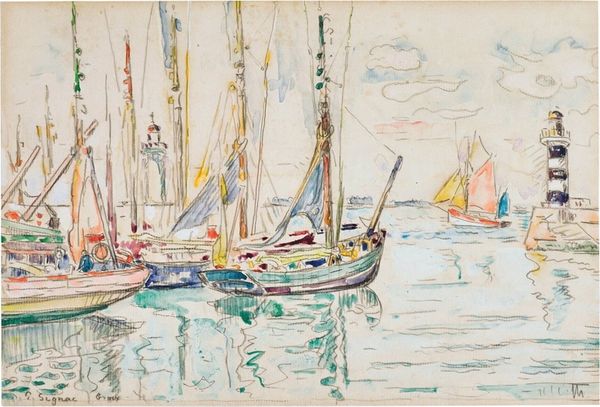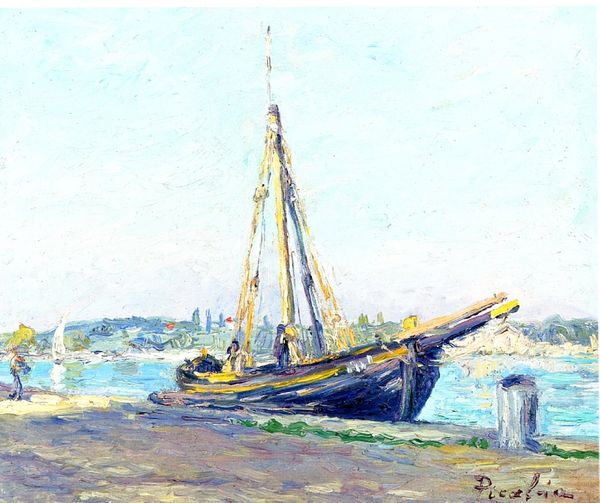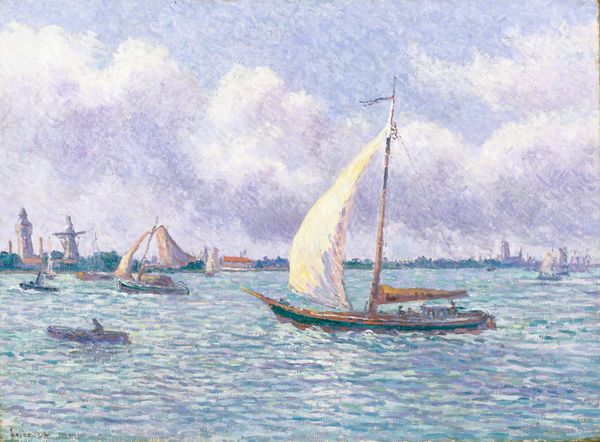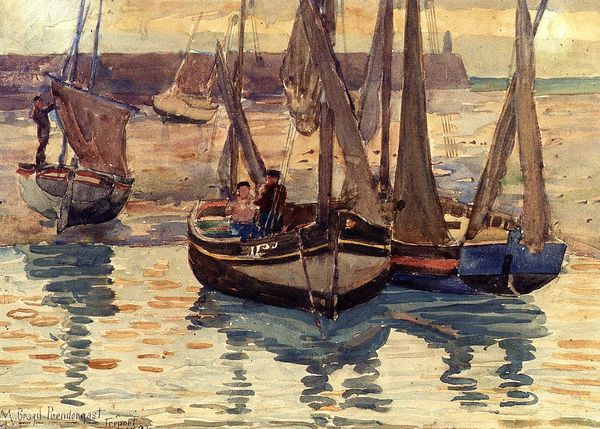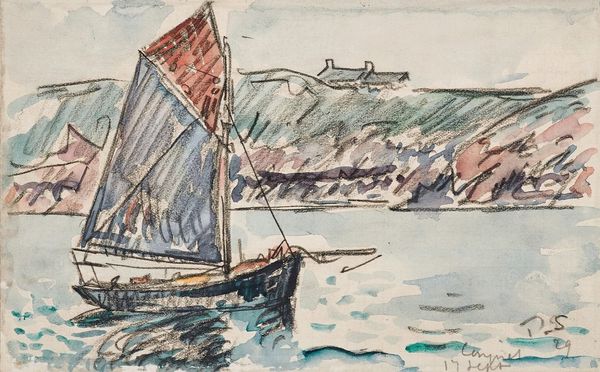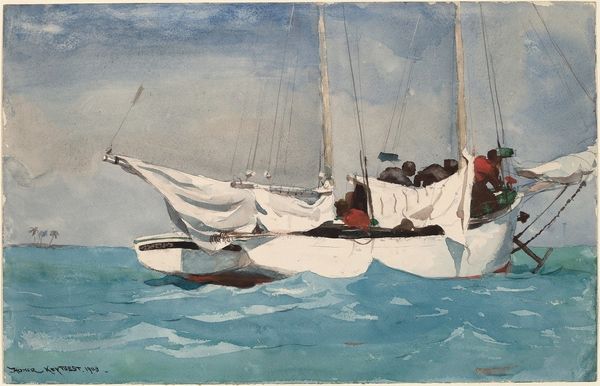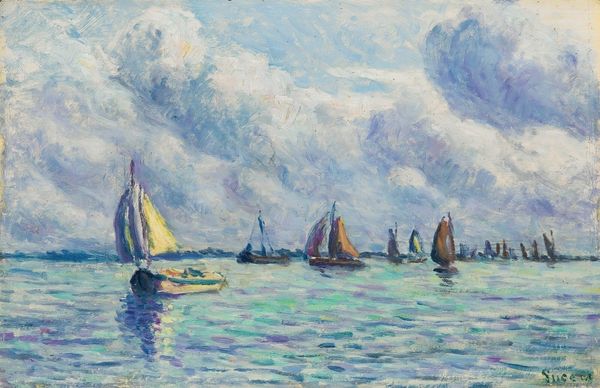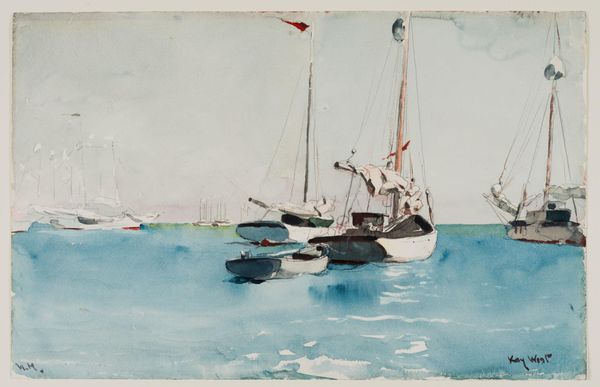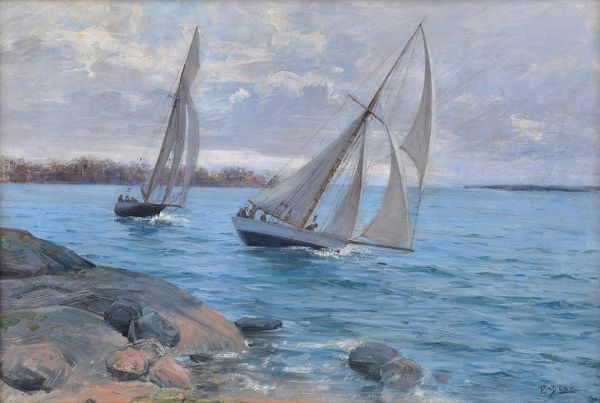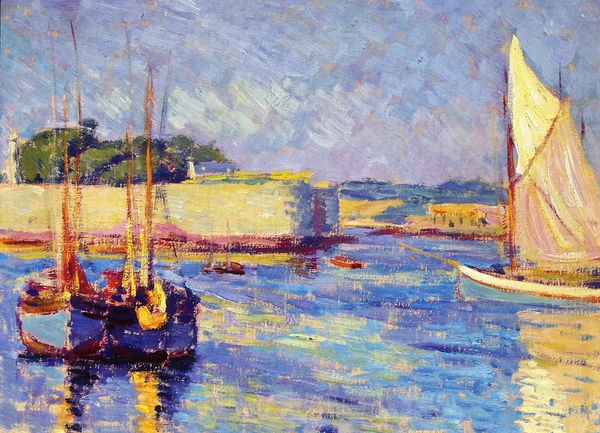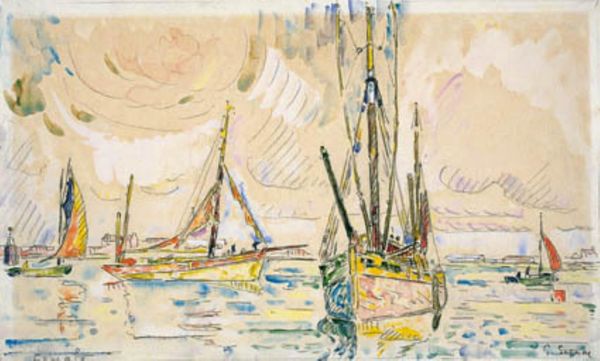
Copyright: Public domain
Curator: Ah, a piece titled "The Waterfront," crafted in 1922 by Frank W. Benson. It seems he primarily worked en plein-air to accomplish these landscapes. Editor: It immediately strikes me as bright and airy; the loose brushstrokes create such a shimmering surface. The materiality here is also important - it’s mostly a watercolor and painting medium, and the paper support is really working hard. Curator: Benson, alongside artists like Childe Hassam, engaged with Impressionism to convey the experience of specific times and places. Considering this and their privilege as a white man it’s important to see the works as products of that era, perpetuating perhaps, certain romantic visions of leisure. How does that sit with you when observing a scene like this? Editor: That tension is real, but when I look closely at how the watercolor washes build up the light and shadows on the water, or how the rigging lines intersect, I see a really concentrated study of form and color. Watercolor is, in its materiality, dependent upon a light source to both be seen and to achieve its optical dynamism as a result of transparency of layers of pigments on the stark white ground of the paper. It shows Benson’s interest with observation and his skillful handling of the medium, which isn't incidental to class! Benson, a working-class name in the arts industry made a painting using readily and inexpensive materials. It is very "crafty". Curator: And it connects with discussions around leisure and work of this period. Benson was depicting the waterfront, but not from the perspective of labor. The materiality mirrors that focus on light and leisure rather than a detailed, perhaps, hyper realistic account of waterfront life that focused on work instead of escape. Editor: Exactly! The medium itself communicates a particular approach to the subject. Curator: True, a sort of relaxed vision made possible through a more free approach to making. Editor: It also forces a move toward pure perception given the technical capabilities. It also really shows what an experienced painter can achieve within the possibilities offered by available mediums. Curator: Looking back, "The Waterfront" invites us to unpack those intersections of aesthetics, social status and available technologies during the early 20th century. Editor: I'm drawn to how his attention to the materiality really invites the audience to connect with and consider the moment that this painting depicts. It asks the audience to study how to represent perception of a particular place and time, to a global audience.
Comments
No comments
Be the first to comment and join the conversation on the ultimate creative platform.
